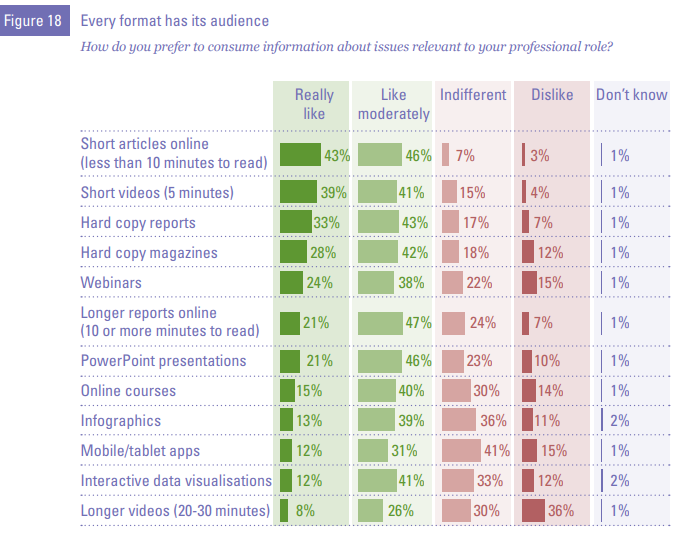Posted , in Featured

in Instinct
Have you heard: The average attention span is down from 12 seconds in the year 2000 to eight seconds now? That is less than the nine-second attention span of your average goldfish.
The dissemination of this somewhat alarming data can be tracked back to a Microsoft report published in 2015 which has been the catalyst for articles in a range of illustrious publications including Time magazine, The Telegraph, and The New York Times, and continues to be quoted. The falling attention span sounds intuitively correct. And the comparison with the lowly goldfish makes for an attention-grabbing and memorable statistic.
Some professional services firms appear to have responded to the falling attention span, shifting some—if not all—thought leadership from chunky publications to much lighter articles online. See, for example, EY’s Building a better working world, or The Boston Consulting Group’s (BCG’s) much greater use of short pieces on BCG.com compared to its portfolio of content previously published on BCG Perspectives.
However, before everyone rushes to surpass EY and BCG by creating tiny goldfish-sized pieces of content, it’s worth pointing out that the eight-second myth has been busted. The BBC explains that, for starters, the idea of an “average attention span” is pretty meaningless, that there’s no research behind the eight-second myth, and that even the analogy is paper thin: there’s no evidence that goldfish—or indeed any fish—have particularly short attention spans or memories.
We haven’t spoken to many fish recently, so we have no research of our own that attests to their attention span, but what data we have about the habits of business people supports the idea that the reality of their attention spans is somewhat different to what popular wisdom suggests. For example, our survey of active users of thought leadership demonstrated that although the most preferred format was indeed the short article online, a significant number are looking for more substantial pieces of content.

And if we add in what users tell us really matters in thought leadership—such as fresh-thinking and evidence-led insights—it becomes even clearer that a wholesale shift to what some term snackable content would be a mistake.
Our view—based on the data we’ve seen—is that the best approach to thought leadership is to firstly focus on the foundations: new insights developed through experience and evidence. These insights should then be delivered in a variety of formats ranging from more substantial pieces of content (which in themselves are easy to browse) to blogs and infographics. Some members of your target audience will go straight to the substantial, while others will be enticed in by a short, sweet snack—and then move onto the main course. And for others, the snack will be enough for now, leaving them with positive associations and a desire to come back again.